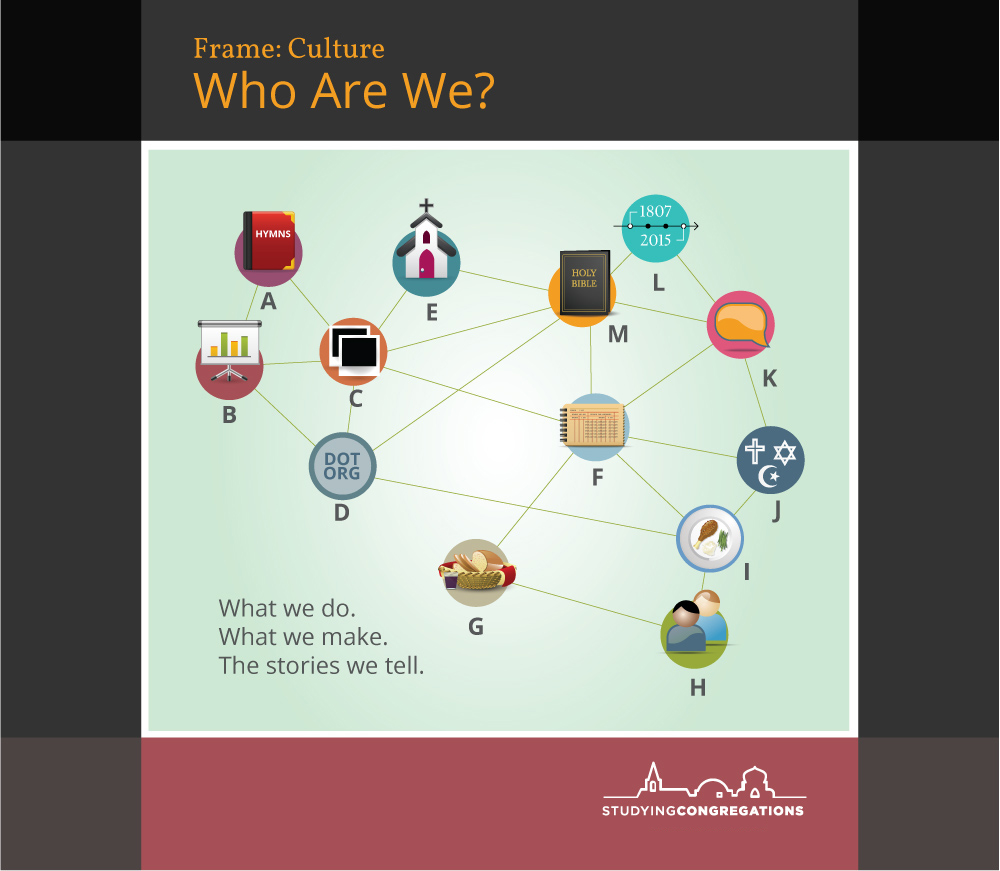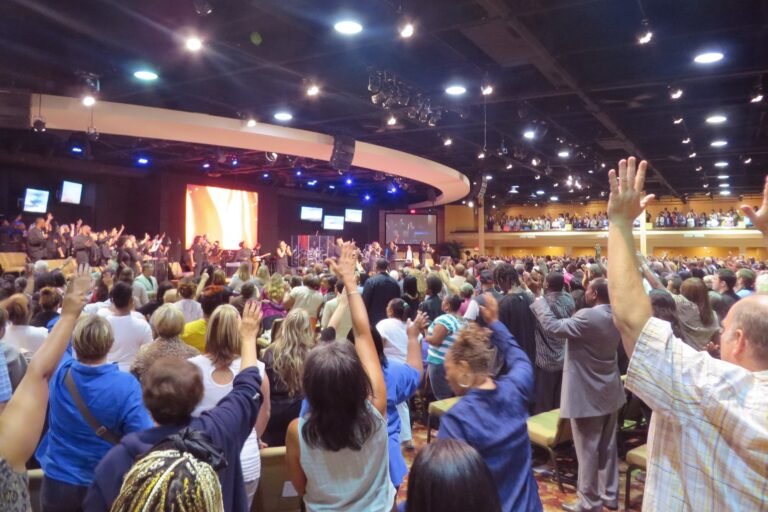
(A) Artifacts – hymnals.
You can learn a lot by what one finds in a congregation — the very things made specifically for that place. Take a hymnal for example. Where did it come from? Who published it? Does it contain just songs or does it include liturgy as well?
(B) Artifacts – new technology.
Increasingly congregations engaging in both contemporary and traditional music are taking advantage of new technology. Take a look around the sanctuary. Are there speakers or sound systems? Projection Screens and/or computers? What do these artifacts say about the congregation?
(C) Artifacts – pictures.
In most congregations you can find pictures displayed in hallways and offices, fellowship halls and perhaps even near the entrances. What’s depicted in these photos? Chances are, they provide helpful clues to understanding what’s important to the people of this congregation.
(D) Artifacts – websites.
How congregations present themselves online is also very important. Not only does it convey something about how this congregation communicates among its members, it is also an expression of the congregation’s identity.
(E) Artifacts – buildings.
Perhaps the most obvious, and certainly the largest, thing congregations make are their physical spaces. Buildings are themselves sites of culture. The set the stage for what a congregation does and they often play a key role in the stories a congregation tells.
(F) Artifacts – budgets, documents and archives.
Congregation produce an incredible array of documents. From budgets to bulletins, the documents a congregation creates provide insights into the people of the congregation, their sense of purpose, what they’ve done and how they carry out their collective lives.
(G) Rituals & Routines.
Congregations often spend much of their time, energy and resources crafting religious rituals. Whether they’re Shabbat services, Friday prayers or Sunday liturgies, these rituals set aside a special time for worship, religious instruction and marking significant milestones for members of the community.
(H) Rituals & Routines.
While rituals are certainly important, it’s also important to pay attention to the ordinary, everyday routines of congregational life: the meals shares, informal times of fellowship, small groups, hallway chatter and the like. These routines help build relationships among members and they help us feel as if we really belong to our congregations.
(I) Rituals & Routines.
Whenever considering the things a congregation does, it’s also very important to pay attention to who is leading or doing the action. Is it a clergy person or another religious leader? Is this activity for everyone or just for children or just for adults? The actors who make up the activity are just as important as the actions themselves.
(J) Stories.
Congregations tell many stories in many ways. One way is through their use of symbols (both religious and non-religious). Look for symbols of the congregation in prominent places such as worship spaces and places where the congregation gathers. But also look for them in the more out-of-the-way places: on the clothing official leaders wear, on furnishings and in the architecture. How do these symbols connect the life of the congregation to larger stories of the religious tradition, community or the nation?
(K) Stories.
Another way congregations tell a story is through the everyday conversations of their members. Participants share stories with one another about their everyday lives: about their families, their work, how their week went, how they have been struggling or celebrating.
(L) Stories.
The collective lives of congregations are often crafted and curated by those who have been around for a while. How a congregation tells it’s history is itself a very important story worth telling and hearing. Often you can find these local histories told orally and written down.
(M) Stories.
Sacred stories, such as those in the sacred books of a religious tradition, are also among the stories congregations tell. They perform these stories in rituals, they learn of them during times of religious instruction and they seek to connect these stories to those of their everyday lives.
Talking Through History
One easy way to learn about your congregation’s culture is to explore it’s history. This tool will show you how to create a congregational timeline.
Using Photos & Video
Another helpful way of understanding your congregation’s culture is to use photos and videos. This tool helps you see things from other’s point of view.
Making Observations
One of the best ways to understand the culture of a congregation is to step back, watch and listen to the elements above with a critical curiosity.


